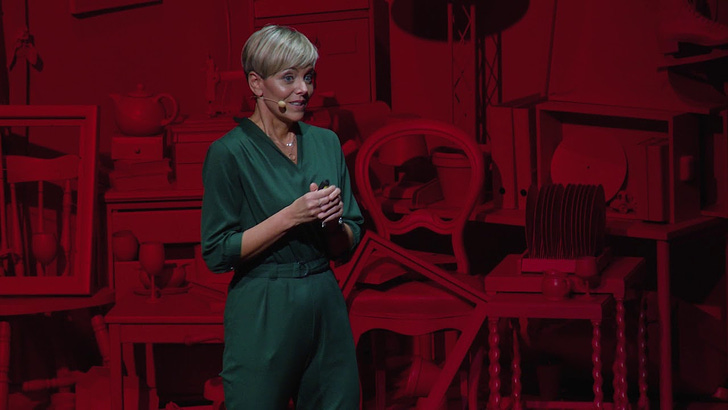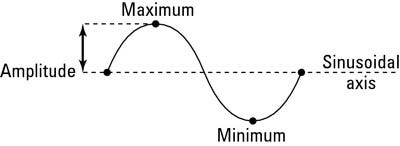If you have done any calculus, you might remember the terms ‘maxima’ and ‘minima’. You will probably have looked at the sine and cosine functions and seen that they ‘wiggle’ between a set of maxima and minima
This notion of finding the maxima or minima is central to the idea of optimization. You might, for example, be interested in finding the operating parameters of some production line that will give you the biggest output (the maxima). If you operate with those parameters, you can be said to have optimized your output.
Alternatively, you might want to minimize something in order to optimize something; the production costs per unit might be one example here.
A more complicated optimization problem would be to figure out how to maximise output whilst simultaneously minimizing costs - and those two goals might conflict with one another. Minimizing costs might produce an unacceptably low rate of output, for example.
These kinds of problems are, generally, examples of constrained optimization.
Evolution can be thought of as a kind of constrained optimization. There are many things that will impact upon ability to produce successful offspring and being the best at avoiding ‘danger’ X may actually lessen your ability to avoid ‘danger’ Y. So, some kind of bargain has to be struck. Evolution will tend to optimize the outcome across all the various ‘danger’ constraints; kind of like being a jack of all trades but master of none.
Whenever we think of some characteristic generated and honed over millions of years of evolution, we might be tempted to ask “why didn’t evolution make that characteristic a bit better?”. Probably because doing so would cause some weakness in another area that would cause a deviation from the position of overall optimization.
Evolution has generated for us a marvellous and adaptive immune system. It’s a result of millions of years of challenge from all sorts of threats and the complex system that results represents an ‘optimization’, or a near-optimization. But, like most things in evolution, it will be based on a set of judicious trade-offs that give an overall optimization, rather than just optimization with respect to any one specific threat.
Take just one component of our immune defences: antibodies. We don’t continue to produce antibodies after the disease threat has passed; the antibody level wanes. Keeping a continually high level of antibodies against antigen X is costly in terms of resources and so the solution generated by evolution is to produce mechanisms that ‘remember’ the threat, so that if it arises again the antibodies can be quickly re-made.
We fuck about with the methods provided by evolution at our peril.
Maybe a little bit of judicious tinkering helps, but we always have to keep a very close watch on what we might be buggering up by that tinkering. If we give a bit of extra protection against danger X, have we weakened our ability to deal with danger Y?
I don’t actually know, but my supposition is that something like Original Antigenic Sin (OAS) arises because of an evolutionary trade-off. My guess is that, rather than responding as if faced with an entirely new antigen, if a ‘variant’ comes along that is similar enough, the body will regurgitate the old defences that worked before. This will represent a considerable timesaving, and so might be a really good strategy in most instances. You trade-off freshly minted, but delayed, more optimal protection with slightly less effective, but much quicker, protection.
These kind of ‘big picture’ evolutionary considerations were brought starkly into focus when I watched a very interesting talk given by Professor Christine Stabell Benn.
Whatever one thinks of vaccines, the data she presents in this very simplified outline is fascinating. Giving ‘live’ polio vaccines to new-born kids in Guinea-Bissau reduces their mortality by 1/3, even when there is no polio in circulation.
She describes this as a non-specific effect of the vaccine. It’s not protecting against polio, because there is none, but vaccination with a ‘live’ virus seems to afford protection against other illnesses that can kill kids.
She likens this to being trained by a tennis coach. When a real opponent comes along, you’ve got a better chance of returning their shots.
She then compares this to a vaccine based on an inactivated virus (she uses the term ‘killed’ which I think is unfortunate because viruses aren’t ‘alive’). The DTP vaccine (which she says generates protection against Diphtheria, Tetanus and Pertussis), is an example of a vaccine based on inactivated versions of the pathogens, and the overall mortality rate for vaccinated kids is 5 times higher than for unvaccinated kids.
She likens this to being ‘trained’ by one of those tennis machines that produce a very specific kind of shot. You learn to respond to a very specific kind of delivery, but you don’t get the more rounded expertise that you would from a tennis coach.
In other words, you might have protected the kids against dangers X by vaccination, but you’ve buggered up their ability to defend against dangers Y.
Now, where have we seen this before, I wonder?
Oh, yes, that’s right - in the original Pfizer trials for their ‘vaccine’. Let’s just pour sulphuric acid into our skull cavities for one moment and actually believe Pfizer’s figure of 90-odd percent effectiveness against covid symptoms. The data from that trial also showed that, overall, the vaccinated group became unhealthier (reported a higher level of overall morbidity) than the placebo group.
Prof Stabell Benn then says that, of the vaccines she and her colleagues have studied, the ones based on ‘live’ weakened pathogens all had a positive, beneficial, non-specific effect. The ones based on inactivated pathogens all had a negative, non-beneficial, effect.
Who’d have thought it, eh? Giving someone something that is very close to a naturally occurring infection confers a much greater degree of protection, overall, than giving someone an unnatural gloop we’ve buggered about with in the lab. It’s almost like our evolutionarily honed mechanisms can tell the difference, isn’t it?
It’s almost like evolution has come up with mechanisms that respond differently to when we’re actually infected with something than when we simply have an inert substance injected (kind of like a toxin).
The mRNA gloop many people have been happily getting liberally squirted into their bodies, repeatedly, is a kind of curious mix. It kind of ‘infects’ the cells in that it hi-jacks the molecular machinery of a cell to produce foreign protein. But I think, perhaps, this is only a functional equivalence. I suspect this ‘quasi-infection’ does not produce the same bodily response as an actual infection by a virus.
More worryingly, the mRNA gloop is not producing a whole virus, but a modified fragment of the original virus. Our bodies have been meticulously honed over millions and millions of years to recognise, and fight off, natural infection. I can well imagine our bodies are going to be producing a very mal-adapted response to this most unnatural ‘infection’ by the mRNA gloop.
Similarly with the ‘spike protein’. I’ve seen people make the argument that the SARS-CoV-2 virus has the spike protein, too, and so we’re not seeing ‘vaccine’ damage but the effect of long covid, or something. But in the actual virus the spike protein is stuck onto the whole virus - it’s not some free-floating junk. Do we really think our body is going to respond to free-floating spike in the same way it responds to spike attached to the larger whole virus? I seriously doubt that it will.
We’ve spent so much time focusing on ‘spike’ we’ve forgotten that covid is not ‘spike’, but spike attached to whole virus. The work of Prof Stabell Benn underlines the fact that our bodies can really tell the difference - and respond differently to each.
This distinction between vaccines based on ‘live’ and ‘dead’ viruses is fascinating. A ‘live’ virus is one which has the ability to infect a cell and to reproduce itself by hi-jacking the cellular molecular machinery. Using a ‘live’ virus, even if it has been very much weakened, can be dangerous and lead to subsequent evolution of a more virulent form of the virus in immuno-compromised individuals. Usually, according to the CDC, a weakened ‘live’ virus is produced by a lengthy process of repeated culturing. This can take a decade.
A ‘dead’ virus, or inactivated virus, has been altered so that it cannot infect a cell. It is effectively like just introducing an inert foreign agent into the body. It will get recognised and dealt with, leading to the production of antibodies for example, but vaccines based on this approach are not anything like as effective and typically require several shots to shore up the protection. And, if Prof Stabell Benn is correct, they also have negative non-specific effects; they weaken our ability to fight off other non-related infections.
Is it any wonder, then, that the mRNA gloop, hastily cobbled together for covid, has been such a monstrous fuck-up?
I’ve talked about evolution as an optimization mechanism, but perhaps it’s worth sparing a thought about how a pharmaceutical company manages the issue of constrained optimization. What are they trying to optimize and under what constraints?
They’re, obviously, trying to optimize their profit. What are the constraints here? Well, that’s not so clear. They’re clearly not optimizing under the constraint of producing an overall morbidity that is at least no worse than the placebo group.
When you don’t optimize properly with respect to sensible constraints you end up with the kind of pharmaceutical carnage we’re seeing with the covid ‘vaccines’.




I always remember when I first started in the oilfield. One old supervisor told me something that would hold true for all my working life no matter what job I was doing.
It was this:
3 words - good, quick, cheap.
You can only have 2 of them together at any one time as:
- if it's quick and cheap it won't be good
- if it good and quick it won't be cheap
- if it's good and cheap it won't be quick
You can never have all 3 parameters at the same time.
Best explain I have heard wrt what is a 'live or dead' whackscene. No wonder. On top of all of this, though, is the king of the hill, the concept of the eugenics bioweapon. They knew this would wreck immune systems and slow kill the ones it didn't fast kill. So.....enter the clowns.